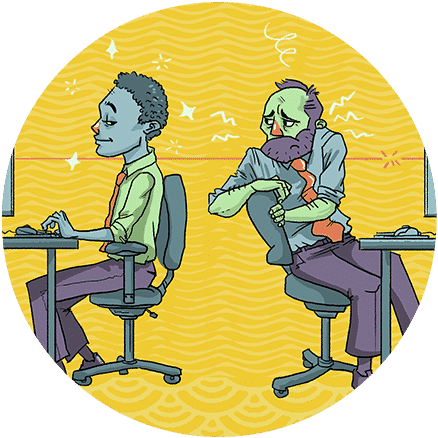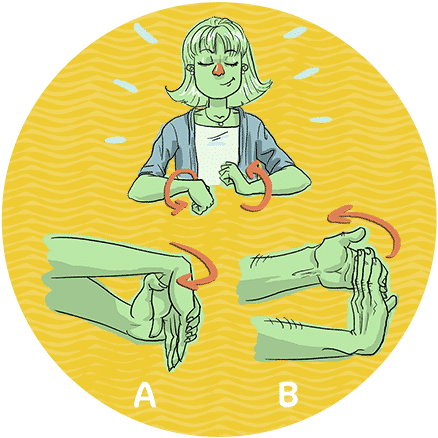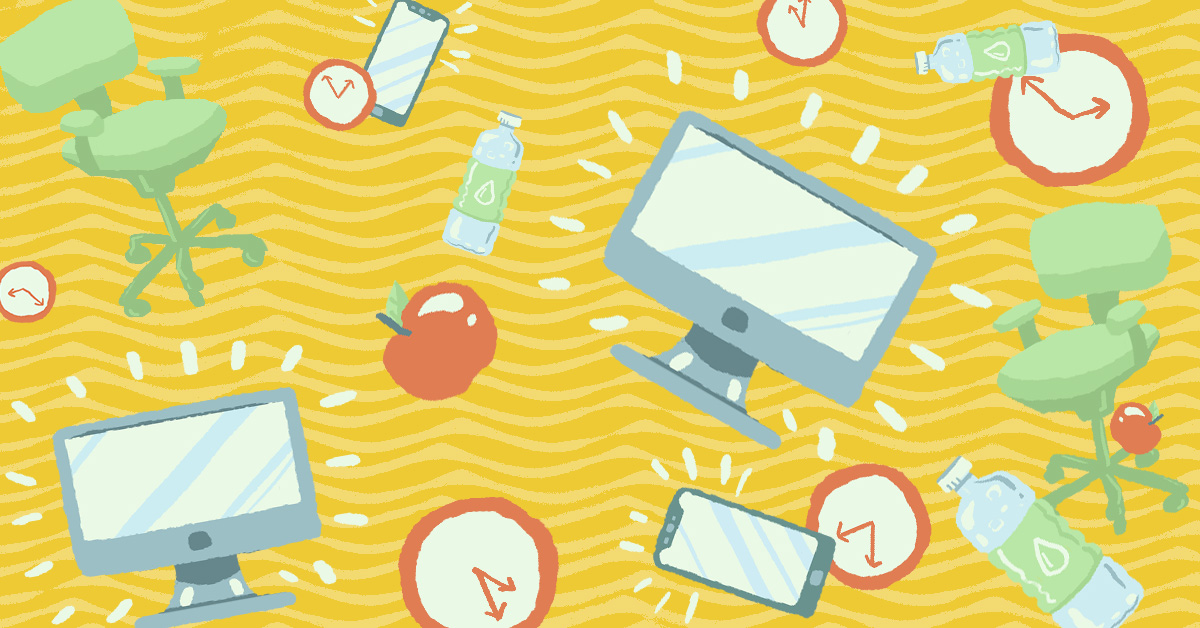Chances are you’re reading this post as you’re sitting in an office chair, hunched at your desk, chin on hand, eyes staring into a bright screen. We’ve all been there.
To work full time in an office is to live a largely sedentary lifestyle. No amount of weekend warrior-ing or morning runs seems to undo the effects of sitting for nearly eight hours straight, Monday through Friday. However, do not despair. Studies show that breaking up half hours into 20 minutes of sitting, 8 of standing, and 2 freely moving can do wonders to keep blood pressure low and maintain proper glucose levels. Unfortunately, this is a hard target to reach for those without standing desks or relaxed work environments.
Below are a few other ways you can prevent back pain, eye strain, and even carpal tunnel while on the clock.

The Eyes Have It (Bad)
Welcome to the 21st century- Americans are spending more than ten hours per day on average staring at a screen. Big or small, bright or dim, that’s a lot of wear and tear on your eyes.
Below are a few brief exercises you can utilize at your desk to mitigate those headaches and hopefully postpone those stylish bifocals.
- 20:20:20 Rule: Every 20 minutes, look at something about 20 feet away for 20 seconds.
- Roll Your Eyes: Open or close, imagine a clock and move your eyes in 15 minute increments. Then roll them in a big sweeping circle.
- Light adjustments: Unless you are a designer working with color, find an app or setting to adjust the temperature of your screen. A warmer tone in a darker room is easier on your eyes than bright white or bluish hues. If you are in the market for a new device, try to find one with a matte screen option to reduce glare.

The Hunched Backs of 9-5
Sit up. Straighten your spine. Set your feet in front of you, flat on the floor, put your shoulders stacked over the hips, and keep your chin up. Easier said than done, right? Most of us have trouble remembering to hold good posture, especially when crafting that sensitive email or battling to hit a deadline. Posture comes with practice, and it’s better to start now and work at it than to never try and face the painful, creaky consequences.
- Align Your Spine: Don’t slouch. Don’t hunch. Arrange your workspace so you are looking straight ahead at your computer rather than down. Adjust your chair for comfortable right angles, not slopes.
- Neck Rolls: Every hour or so during a small stretch break, do some big, slow neck rolls in both directions. Be gentle, and don’t push it if something feels sore or wrong.
- Nods: Following your rolls, place your chin to your chest, then slowly raise your face to the ceiling. Slowly do 3 to 5 nods, letting your jaw relax and drop open at the apex.

Wristen Up: How to Avoid Carpal Tunnel
Most people are typing, using a mouse, writing, or fiddling with mobile devices daily. Just like abs or quads, the muscles and tendons in your forearms need exercise and tending to avoid painful injury and even surgery.
- Straighten Up: Maintain a straight and elevated position for the wrists when typing. A curve or angle in the wrists causes strain and eventually, injury.
- Breaks: Be sure to take a few moments to stretch or rest. Repetition causes strain, which leads to dreaded carpal tunnel syndrome.
- Soften Up: Minimize contact with hard surfaces. Look into wrist rests and other soft supports.
- Wrist Circles: Make two fists and slowly roll at the wrists (see illustration above).
- Pull Downs: Fully extend an arm. Slowly pull your hand towards body until a light stretch is felt (see Figure A). Once finished, rotate your arm, and gently pull your hand the other direction (see Figure B). Never do these exercises quickly or harshly.

Moving is Medicine
Taking care of your body in and out of the office is essential to quality work and productivity. You only get one body and it is in your best interests to take great care of it. Decision fatigue is real, and small, short breaks to assess your physical and psychological status can go a long way in keeping you fresh on the job.
- 15:15 Rule: Every 15 minutes, take 15 seconds to breathe and stretch. If possible, take 5 to 15 minutes every hour to stand up, stretch, and give yourself a small time out. There are many apps and programs out there that time these intervals to help you remember.
- Water: Drink. Hydration is key. Refilling your water bottle is a good way to get a brief stretch in, and maybe build a little rapport with your coworkers.
As with all forms of exercise, if you are experiencing any pain or discomfort, it is always wise to talk to your physician. For additional information on stretches, exercises, and aids such as wrist braces, work with your doctor to set up a custom, supervised regimen.
Take a moment, give your eyes a rest, and stretch it out!













